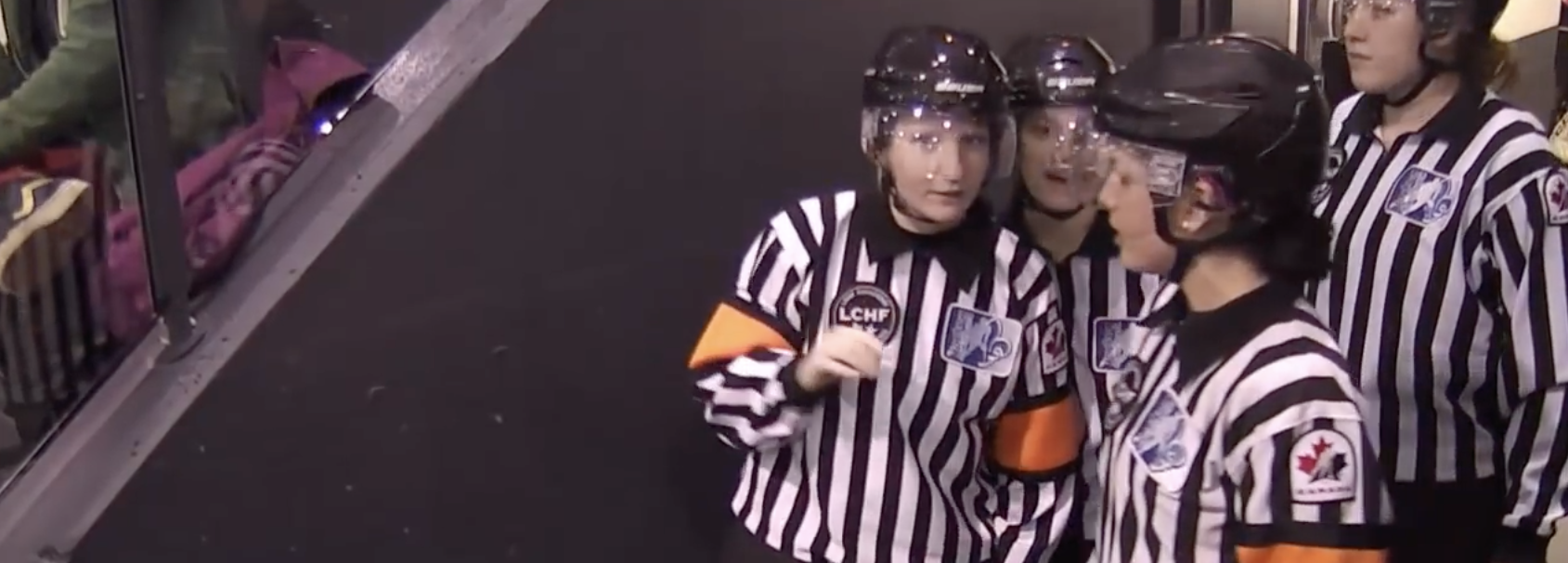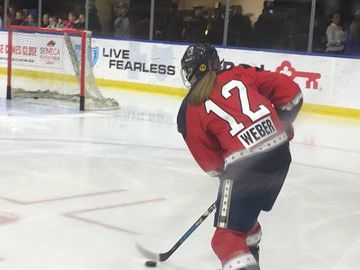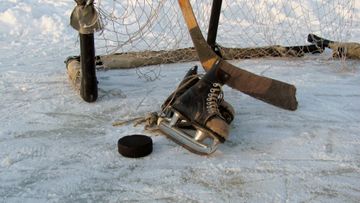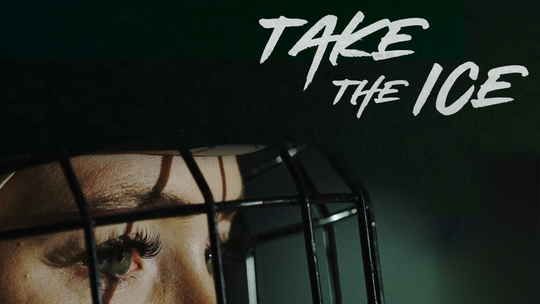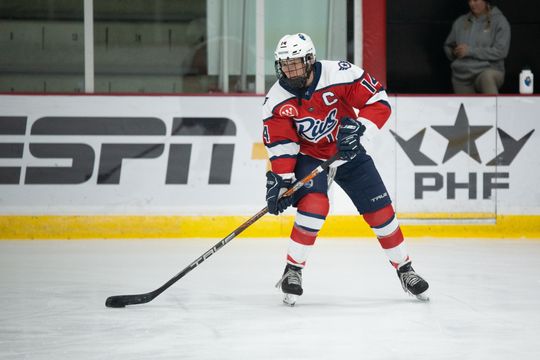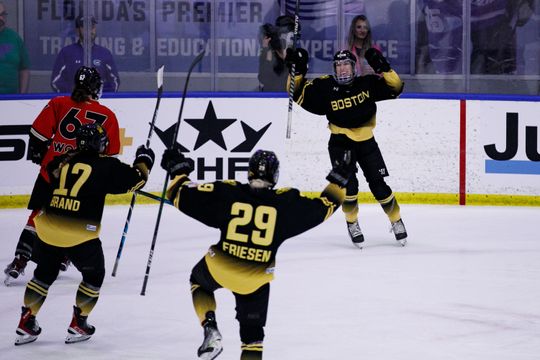"Growing the game" is an important concept in women's hockey, and it's been adopted by both professional leagues -- the NWHL and CWHL. The mere existence of these leagues help bring women's sports to wider audiences and further the growth of women's hockey across a variety of age levels. The existence of these leagues says to young girls that being a professional hockey player is possible for women -- and no doubt, it's an important lesson to foster on its own.
But the NWHL and CWHL don't just support women's hockey players, and the future of them. These leagues are also helping to grow the game in other ways, including in one that is less often spoken about: the world of officiating.
For the most part, the roles of referees and line officials in women's hockey are the same as in men's hockey. Per IIHF rules, referees can signal timeouts, goals, and penalties, while line officials are responsible for signaling icing, offside calls, and when there are too many players on the ice. Referees in women's hockey are allowed an additional penalty: the illegal hit call.
The History of Female Officials
As of 2017, there has never been a female referee or line official in the National Hockey League. Heather McDaniel made history in 1995 when she became the first woman to officiate a men's professional hockey game, working in the Central and West Coast hockey leagues.
Since McDaniel hung up her skates four years later, the world of female hockey officials hasn't been the same -- but there has been some progress.
The SPHL had a pair of female officials work a game in 2014, as Erin Blair and Katie Guay both reffed a game between Fayetteville and Columbus. This marked the first time in 15 years that a woman had reffed a men's professional game.
As recently as 2015, Sportsnet suggested that the NHL is looking into hiring female officials, a move that was supported by the league's inviting a female referee to their summer combine.
Today, there are over 2800 registered female officials in the United States, per a 2011 ESPN article, but they have generally had limited options above the junior and college levels. However, the introduction of both women's professional leagues is helping to open the doors.
CWHL and NWHL Offering a Ladder Upwards
The inaugural season of the NWHL was an excellent one for furthering the opportunities of female officials and offering them a spot in the professional hockey world. Of 36 regular-season games in 2015-2016, at least 23 featured at least one, if not more, female officials. (Twelve games had no information regarding either referees or line officials on the box scores.)
That season included an historic moment when, in the league's very first game, an all-female officiating crew took the ice for a professional hockey game. Referees Katie Guay -- yes, the same who made history when she reffed that SPHL game back in 2014 -- and Andrea Wissman were joined by line officials Danielle Bugge and Francesca Clemente, which put a significant female face to the world as the NWHL made its debut.
Over the course of the league's first season, no fewer than 17 female officials would work at least one professional game. Guay would work at least seven games -- mostly as a referee, but also filling in as a line official on at least one occasion. Clemente and Bugge would each work the lines for at least five games each.
Other women who officiated in the NWHL's inaugural season include Dina Allen, Micaela Frattarelli, Jerilyn Glenn, Sarah Hickman, Samantha Hiller, Rachel Hutchinson, Laura Johnson, Jodi Price, Chelsea Rapin, Jackie Spresser, Emily Vitale, Chelsea Ward, and Carol Weston.
While many (if not most) of these women had already been working games at high levels, including college and internationally, the NWHL opened the doors to the world of professional hockey in a way that wasn't possible at the same level before the league's existence.
The league's second season didn't see as many female officials working games. Of thirty-five regular season games, seven included at least one female official. Seven games had no details in their box scores regarding the referees or the line officials, so once again, there's incomplete data here.
Some of the same women who had entered the NWHL stage in the inaugural season also had opportunities to work for the league during its sophomore season, too. Clemente, Johnson, Price, and Ward all worked at least one NWHL game during the 2016-17 season. Another pair of names were also added to the roster: Erica Drake and Laura White.
Quantifying the numbers for the CWHL is more challenging. The league's box scores don't provide any information regarding officials, so it's hard to say exactly how many female officials have worked CWHL games over the past years. Per game videos from the 2016-17 season, many games broadcast on CWHL Live featured at least one, if not more, female officials.
CWHL commissioner Brenda Andress herself has a strong background in officiating; she's certified with Hockey Canada at the highest possible ranking (Level VI) and is qualified to officiate at any national championship or IIHF competition.
A 2013 league article mentioned three then-current CWHL officials: Heather Richardson, Vanessa Stratton, and Justine Todd. The inaugural CWHL All-Star Game in 2014 featured four female officials: Vanessa Stratton, Lisa Grison, Jenn Gunette, and Heather Richardson. A Calgary-Montreal game in February 2016 featured at least three female officials: Shelly Knowlton, Michelle Barry, and Cassandra Gregory, who are all pictured together in an on-ice photo.
In addition, on at least one occasion, the same official worked NWHL (Pride) and CWHL (Blades) games in Boston -- a rare overlap between the two leagues, but an understandable one, considering the proximity between the teams.
A Trio of Professionals
Now that you've got a basic grasp on some of the history behind, and present state of, female officials in professional hockey, it's time for the fun part -- learning the stories of these women. I've spoken to three of the aforementioned women about the hockey officiating world, the NWHL, and about being a woman who works in such a typically male-dominated field.
Chelsea Ward has been officiating for about six years. In addition to the NWHL games she's worked over the past two seasons, Ward has also worked NCAA games, juniors, and youth league games.
Francesca Clemente has been officiating for 14 seasons. She's worked college games; youth, high school, middle school, and junior hockey, including the Long Island Amateur Hockey League (LIAHL), Catholic High School Hockey League, and the EJHL; other junior leagues; and of course, the NWHL.
Jodi Price has been officiating since the 2008-09 season, when she was just 16 years old. In addition to the NWHL, she skates for the IIHF, CHA women's hockey, ECAC West, and USA Hockey.
Each of these women has a unique path that has led them to the world of officiating.
Ward said she started officiating when she saw her sister, Brie Zdunkiewicz, enjoying it. Zdunkiewicz has officiated games in the CWHL.
"I was doing some skills coaching at the time and figured if I was going to be spending all my time at the rink, may as well try one more thing," Ward said.
Meanwhile, Clemente began her officiating career thanks to two other girls she was playing hockey with, who recommended she attend a seminar on officiating.
Price's officiating career started, at least partially, out of necessity.
"I needed a job that would be flexible with my hockey schedule. We have good family friends that their sons were reffing, so they let me borrow some equipment to get started," she said.
Regardless of how they began, for many, if not most, of these female officials, this isn't their main job. Ward works full-time as a research coordinator at a pediatric hospital; Clemente is a high school teacher and also teaches weekly group fitness classes at a local gym. Price hopes to finish her nursing degree and does personal training.
Fighting the Boys' Club Mentality
No matter what they do away from the rink, when it's time to head to the ice, there's only one thing on their minds: the game at hand. By and large, the hockey officiating world is a male-dominated field, which can provide some challenges along the way.
Ward says that it can be challenging, but not in the way some people may think.
"My biggest challenge has been with assigners not wanting females in the 'boys' club.' However, I've had almost entirely good experiences with coaches and players being respectful and treating me like any other official on the ice," Ward said.
Clemente said it's been one of the "most challenging obstacles" she's had to deal with in her life.
"I've had players come up to me and say girls don't play hockey or even referee," she said. "Men automatically assume that because I'm female, that I don't know anything about hockey."
Clemente got into officiating alongside two of her friends (as mentioned above), but when they moved onto college and stopped officiating, she kept going. She said she's often the only female official on the ice and is constantly being criticized.
While Clemente said she is often the only female official working in the New York City area, opportunities for female officials and the growth of officiating seems to depend entirely on the location.
She added that in other areas, Clemente has seem more women getting into the field, and in other states or even in other areas of New York, she has worked with all-female crews, such as those who have officiated some NWHL games. Ward commented along the same lines, noting that it's difficult to make a generalization on the growth of female officials as different districts and areas can be vastly different from one another.
"Girls' and women's hockey has seen such a huge influx in general in the past 15 years that the hope is this large group of females graduating high school or college will start getting more involved," Ward added.
While women's hockey may be growing, female officials are typically working at both men's and women's games. While at the most basic level, both are the same game, each provides unique challenges to contend with.
Price said calling a women's hockey game can be extremely difficult.
"The line between a check, a collision, and a good body contact can be very hard to determine," she said. On the men's side, she added, the biggest challenge can sometimes be just getting put on the ice.
"Linesmen are often thrown into more physical situations, and I think some assigners are afraid to put a female there because of the speed and physicality the men's game brings," Price added.
"The biggest challenge with men's hockey is being smaller," Ward said. "When I'm 5'5 trying to break up a fight between two 6'3 guys, it gets tricky.... [the women] play in a different style, mostly due to not being allowed to body check, so I have to be more alert for different types of penalties."
What Lies Ahead
As the NWHL and CWHL continue to provide opportunities for female hockey players, they will do the same for female officials and women's hockey in general.
"I spoke to a woman on the train before one of my games that I was officiating. This woman never thought about going to a hockey game until she heard about the Riveters (when they were in Brooklyn)," Clemente said.
"She loved the fact that there is a women's professional league. Now, girls have someone to look up to other than a male hockey player," she said.
Ward added that the league gives young female athletes a new aspiration and provides a new ultimate goal: not just college, or Olympic hockey -- but professional hockey.
"It brings the women's game to a broader audience that otherwise may not ever see a women's game," she added. "I've heard countless times, fans, both male and female, who say once they saw their first college or international game, they fell in love and liked the women's game just as much as -- though usually, more than! -- the men's game."
Of course, the question many will ask is this: will there be a female official in the NHL someday?
Price said she believes that women need to conquer some lower levels of men's pro hockey first, pointing out that there are several women officiating at the D-1 men's college level who could be the closest to reaching the NHL.
Both she and Clemente said they didn't see a female official in the NHL anytime soon, but that it could happen down the line.
For the time being, and the foreseeable future, women will continue officiating game at many different levels of hockey, including college, juniors, and professional.
The next time you sit down to watch a hockey game -- be it college, NWHL or CWHL -- think about who the officials are, and how these women are helping to "grow the game" in their own way, while simultaneously giving young girls different role models.
And for those young girls, a word of advice:
"Work hard, skate hard, know your rules -- and don’t let anyone tell you that you can’t be a referee," Clemente said.
